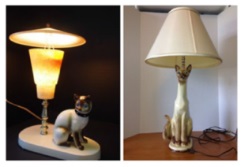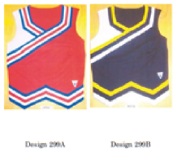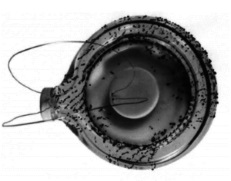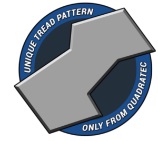
The Supreme Court's decision in Star Athletica v. Varsity Brands established a new and simplified test for determining whether useful articles can obtain copyright protection. Many have wondered, in the year since it was decided, about the practical effect of the ruling. Are there really that many items that would not have merited protection before Star Athletica, but that will get it now? We recently received some insight into this issue from the Copyright Office Review Board ("CORB"). CORB decisions don't bear traditional case captions, so let's call this one In re Floor Liner.
What did Star Athletica do?
The Copyright Act was traditionally viewed as hostile to industrial design, as opposed to artistic design. Copyright protection is therefore not normally granted to "useful articles," such as a lamp or a piece of clothing. However, under 17 U.S.C. § 101, the design elements of those useful articles are copyrightable if they are "separable," that is, if they "can be identified separately from, and are capable of existing independently of," the utilitarian aspects of the article.

There are two kinds of separability: a design element can be physically separable or conceptually separable from the utilitarian aspects of article. Here's a nice illustration courtesy of Justice Breyer's dissent in Star Athletica. The lamp on the left has a base that includes a sculpture of a cat that is literally physically separable. The lamp on the right incorporates the cat into the lamp function, so it is not physically separable. But you can easily conceptualize it as a standalone sculptural work, so it is conceptually separate.
Star Athletica was a dispute between two manufacturers of cheerleader uniforms. One accused the other of copying its designs, specifically the chevron and stripe patterns. The accused copier countered by arguing that the designs could not be copyrighted because they were not "separable" from the utilitarian purpose of the clothing.

Prior to Star Athletica, courts used an inconsistent variety of different factors to determine whether a design element was separable from a useful article. These included the distinctiveness of the shape, whether the designer's artistic judgment was involved, and the extent to which functional considerations influenced the final product. However, the Supreme Court majority, in an opinion authored by Justice Thomas, swept all of that away by establishing a simplified two part test for determining when pictorial, graphic or sculptural design features are "separable" from a utilitarian object. Under the new test, courts simply ask:
- Can the design feature be perceived as a two or three dimensional work of art separate from the useful article?
- If so, would that feature qualify as a protectable work – on its own or in some other tangible medium of expression – if imagined separately from the useful article into which it is incorporated?
Under this test, the cheerleader uniforms easily qualified for protection. First, you can perceive of the stripes and chevrons that make up the design as a work of two-dimensional art separate from the useful article (the piece of clothing). Second, that separately imagined design could qualify as a protectable work because it is sufficiently original (which is a pretty low bar).
CORB Decisions since Star Athletica

CORB is a body within the Copyright Office that hears final administrative appeals from refusals to register copyrights. In 2016, the Copyright Office very helpfully began making CORB decisions available on its website.
Since Star Athletica, CORB has heard a handful of cases involving the useful article doctrine. The first CORB decision to cite the new test was In re Pizza Slice Pool Float, decided in July 2017. The case involved the copyrightability of a rectangular inflatable pool float with a pepperoni pizza slice design. CORB affirmed the refusal to register on the grounds that the design was not sufficiently original, but noted in dicta that the two-dimensional pizza design, although unoriginal, was easily separable from the object's function under the Star Athletica test.

More recently, in April 2018, CORB had occasion to reverse a refusal to register using the Star Athletica test. In re Pendant Lamp-76 involved a glass sculpture in the shape of a bisected globe, which contained an internal filament so that it could function as a lamp. CORB held that the sculptural elements were separable, and therefore protectable: they could be perceived separately as a standalone work of art, irrespective of whether the object also functioned as a lamp; and that art (unlike the pizza slice) was sufficiently original to merit protection. These cases are interesting applications of the test, but they very likely would have come out the same way before the Supreme Court's opinion.
In re Floor Liner

In re Floor Liner, decided April 19, 2018, is arguably the first CORB case that may have come out differently before Star Athletica. The applicant was Quadratec, Inc., which makes after-market auto parts, including all weather floor liners (you can see color versions of them here). Quadratec sought to register the raised pattern on the surface of the floor liner, comprising various "shapes and orientations" (including the "unique tread pattern" that Quadratec advertises as an element of its trade dress). The Copyright Office refused registration of the pattern, apparently on the grounds that the three-dimensional design of the pattern served the purpose of trapping dirt and water.
On appeal to CORB, Quadratec emphasized that, although any grooves and lines in a floor liner will in fact trap dirt and water, the specific decorative pattern chosen by Quadratec "serves no useful function" and is "solely for cosmetic purposes." Applying the Star Athletica test, CORB found that the work contained artistic features that were separable from the overall useful article, specifically the collection and pattern of shapes, which can be imagined separately from a floor liner. The refusal to register was therefore reversed.
Why might this decision have come out differently before Star Athletica? Consider a few excerpts from the now-outdated 2014 Compendium of U.S. Copyright Office Practices. Section 924.2 stated:
The Office will register claims to copyright in useful articles only on the basis of separately identifiable pictorial, graphic, or sculptural features. These features should be capable of independent existence apart from the overall shape of the useful article.
Is the phrase "capable of independent existence" a tougher test than asking whether something is merely capable of being "perceived as a [separate] work of art?" Maybe, maybe not. But keep reading through to Section 924.1:
The mechanical or utilitarian aspects of a three-dimensional work of applied art are not copyrightable. For example, the serrated edge of a knife cannot be registered, even if the pattern of the serration is original.
If you believe that the grooves of a floor mat are integral to the purpose of a floor mat, just as the edge is integral to the purpose of a knife, then it's difficult to reconcile the two examples.
Moving on to Section 924.2(B), here is how of the 2014 Compendium described the conceptual separability test:
Conceptual separability means that a feature of the useful article is clearly recognizable as a pictorial, graphic, or sculptural work, notwithstanding the fact that it cannot be physically separated from the article by ordinary means. . . A pictorial, graphic, or sculptural feature satisfies this requirement only if the artistic feature and the useful article could both exist side by side and be perceived as fully realized, separate works — one an artistic work and the other a useful article. For example, the carving on the back of a chair or an engraving on a vase would be considered conceptually separable, because one could imagine the carving or the engraving as a drawing on a piece of paper that is entirely distinct from the overall shape of the chair and the vase. Even if the carving or the engraving was removed the shape of the chair and the vase would remain unchanged, and both the chair and the vase would still be capable of serving a useful purpose.
Could the floor liner have passed this test? Are the floor liner patterns "clearly" recognizable as a standalone work, in the same way a piece of pizza is clearly recognizable? Before answering this question, consider that the 2014 Compendium made clear that "merely analogizing the general shape of a useful article to a work ... of abstract sculpture does not satisfy the conceptual separability test."
Finally, what about the chair example? If you remove a carving from the back of a chair, the thing still functions as a "fully realized" chair. But if you take the dirt-trapping patterns from an automotive floor mat, is it still functioning as a "fully realized" floor mat? Before answering that question, consider that the 2014 Compendium further stated that "if the feature is an integral part of the overall shape or contour of the useful article, that feature cannot be considered conceptually separable because removing it would destroy the basic shape of the useful article."
A Dirt Trap for Unwary
Even if you agree that Star Athletica makes it easier to register the design elements of useful articles, that doesn't mean that registrants are without obligation. An important part of In re Floor Liner is CORB's statement that its opinion was dependent on the applicant's "representation that this pattern services a purely aesthetic purpose." In a footnote, CORB explains that this representation, if it turns out not to be true, could subject the applicant to criminal penalties pursuant to 17 U.S.C. § 506(e).
So let's say, hypothetically, that an applicant makes a false statement about function to the Copyright Office. How would the Copyright Office ever find out? Here's how: someday, that applicant may wish to enforce the copyright, and the party on the other side is going to take discovery. Any evidence uncovered by the other side about the utilitarian value of the design will be a powerful defense to the claims, and it will introduce the threat of criminal liability into an otherwise purely civil matter.
So while it's true that Star Athletica may offer new protections for designs that border the industrial and artistic realms, that new protection comes with some new risks. Applicants may have to attest to the Copyright Office that these designs are aesthetic and not functional in nature, so they should perform internal due diligence to make sure that any such attestations are unimpeachable, and that they will not one day be contradicted by the applicant's own internal documents or witnesses. What is required is probably a much more searching inquiry than one would perform with a run-of-the-mill application for a purely artistic item.
To view Foley Hoag's Trademark and Copyright Law Blog please click here
The content of this article is intended to provide a general guide to the subject matter. Specialist advice should be sought about your specific circumstances.

